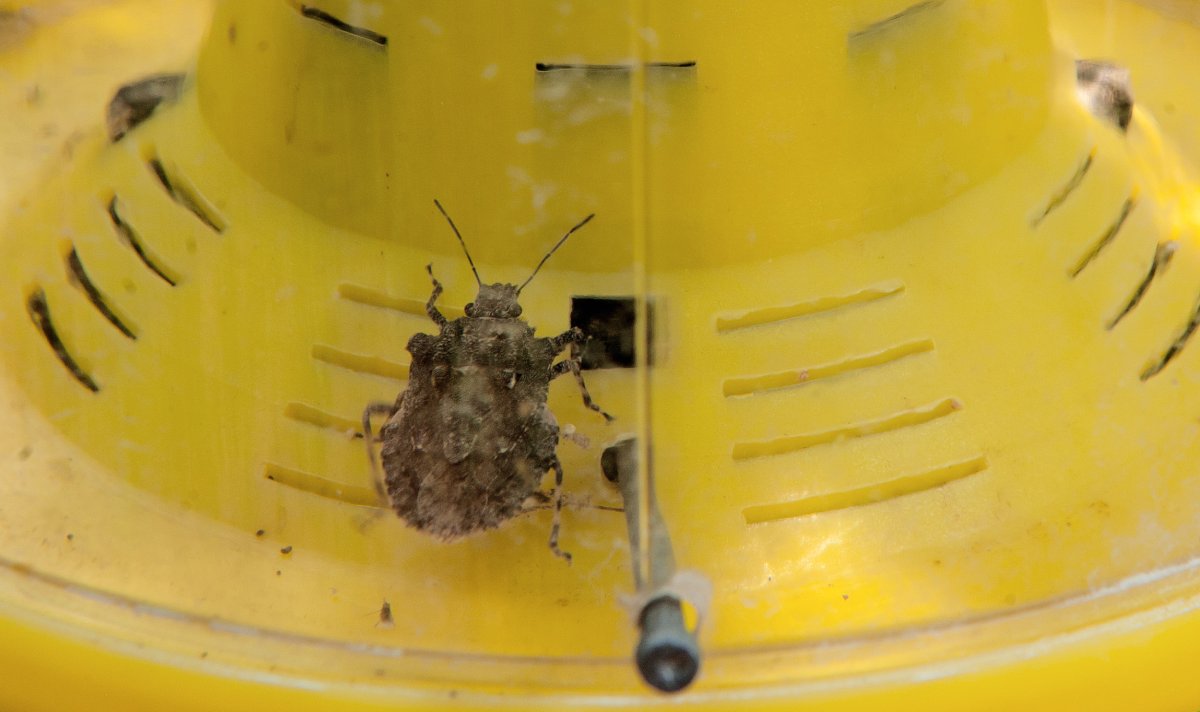While the fall brings changing leaves, apple picking, and cooler weather, the changing season also brings out one major nuisance that so many of us try to keep from our minds in the summer months: stink bugs.
According to the National Pest Management Association (NPMA), the brown marmorated stink bug is most common in the Mid-Atlantic region of the United States, after being introduced from East Asia in the mid-90s. A recent study from Penn State Extension Tree Fruit Entomologist and Research Professor Greg Krawcyzk, reported by Penn Live, suggests that this year may be a particularly pesky year with stink bugs.
Krawcyzk told Newsweek that 2020's climate gave the stink bugs the opportunity to thrive. "[The] very mild winter, and the very good weather [and] atmospheric condition for it in the spring, caused a very low mortality in the overwintering population. So this year almost provided perfect conditions for the stink bug to increase in numbers," he said.
The entomologist continued to explain that this summer was particularly temperate for reproduction. "We got a very hot summer, which is similar as it was in 2010 or 2012, and because of this, we got one additional generation of the stink bug. A normal year, we may or may not have two generations. This year, because of how warm it was, we have two generations," Krawcyzk said.
NPMA chief entomologist Jim Fredericks told Newsweek how the stink bugs' life cycle typically works, and how the warm weather will be reflected this fall. "Brown marmorated stink bugs, say in Pennsylvania for instance, in a normal year will typically have one population cycle during that summer, and that's just because, based on the temperature and the conditions there, they typically will be able to get through one population. From the adults emerging in the spring, laying eggs, those eggs developing as nymphs to become adults that enter homes in the fall," Fredericks said. "Because of this warm weather, we would expect the populations to be larger as we enter the autumn months."
Fredericks said that this uptick will largely be reflected in the Mid-Atlantic region. "From New York to the Carolinas is where we would expect to see populations of stink bugs on par or larger than in previous years," he said.
Krawcyzk said that he tracks the stink bugs in regards to farmers, who are most affected by the bug. "Farmers, fruit-growers, they're dealing with it the whole season long," he said. "We've seen from the very beginning of the season that the numbers in the traps that we use for monitoring at different locations, mostly around the orchards, were much higher this year than in the past," he said.
According to the NPMA, stink bugs eat fruit, leaves, and stems, damaging and destroying crops. Farmers have much more to worry about from stink bugs than the average person. "For the growers, for the farmers, for the people who have soybeans or corn, the stinkbug is causing economic damage. They're losing the value of their crop, which eventually will have impact on the economic values of the whole production," Krawcyzk said.
For people looking to brace themselves for the bugs' arrival, Krawcyzk said that they usually start getting into people's homes around September 20 but "everything is weather dependent."
Stink bugs usually find themselves man made structures to keep warm throughout the cold winter after feasting through the end of the summer. He also reiterated that most people have nothing to fear. "They still do not cause any harm. They still do not bite. They still do not spread any disease or anything like this. They're a nuisance," he said.
While some stink bugs will likely make their way inside regardless, there are a few steps that can be taken. Stink bugs often congregate to conserve heat, and it's likely to see many of them on the side of a building as the seasons begin changing. "As the weather continues to cool, and the days continue to shorten, those stink bugs will find their way into cracks and crevices around homes," Fredericks said. "One of the things that can be done-and it's a really common sense approach-is to try to seal up obvious entry points. If there's utility penetrations, like where the electric line goes into the house or the air conditioning lines go through the siding. Those are places that the typical consumer can maybe seal up to try to keep these bugs from entering."
Still, Fredericks and Krawcyzk both said that there are places that stink bugs can slip through the cracks to get in. So even though sealing the obvious entry points is helpful, there's still the likelihood that a few will get in.
Fredericks also said that getting treatment from a professional in the autumn can be helpful. "If you're concerned that your home has a history or your neighborhood has a history to call a pro to come out and at least help you to develop a control plan that might be proactive," he said.
Krawcyzk still warned that you might still see some stink bugs inside after professional treatment. "It is effective. It will kill the stink bugs walking on the wall, but it doesn't mean that they will not be still able to get inside the house and then die inside," Krawcyzk explained.

Uncommon Knowledge
Newsweek is committed to challenging conventional wisdom and finding connections in the search for common ground.
Newsweek is committed to challenging conventional wisdom and finding connections in the search for common ground.
About the writer
To read how Newsweek uses AI as a newsroom tool, Click here.








